|
Density Mercury 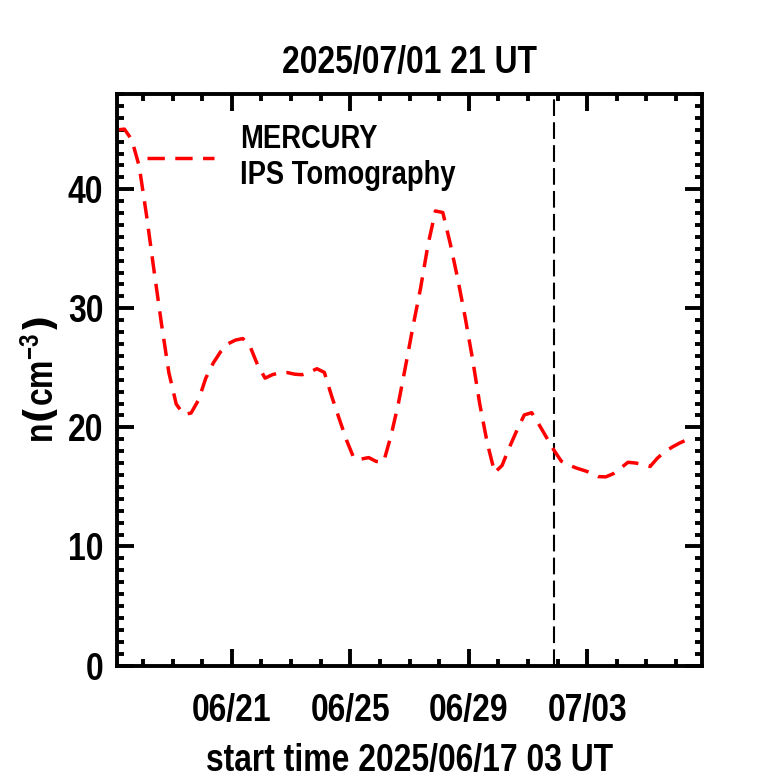
BepiColombo 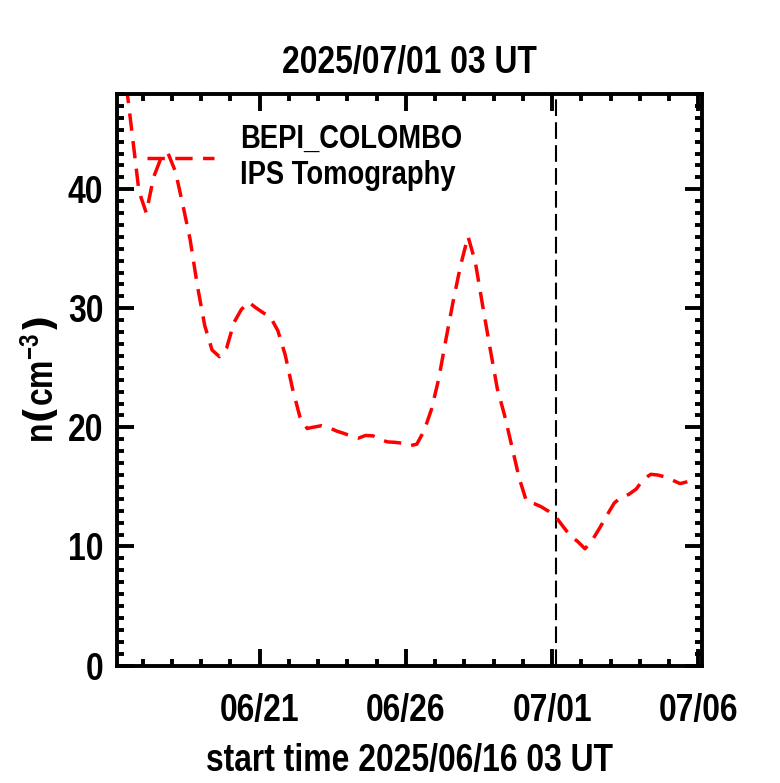
Venus 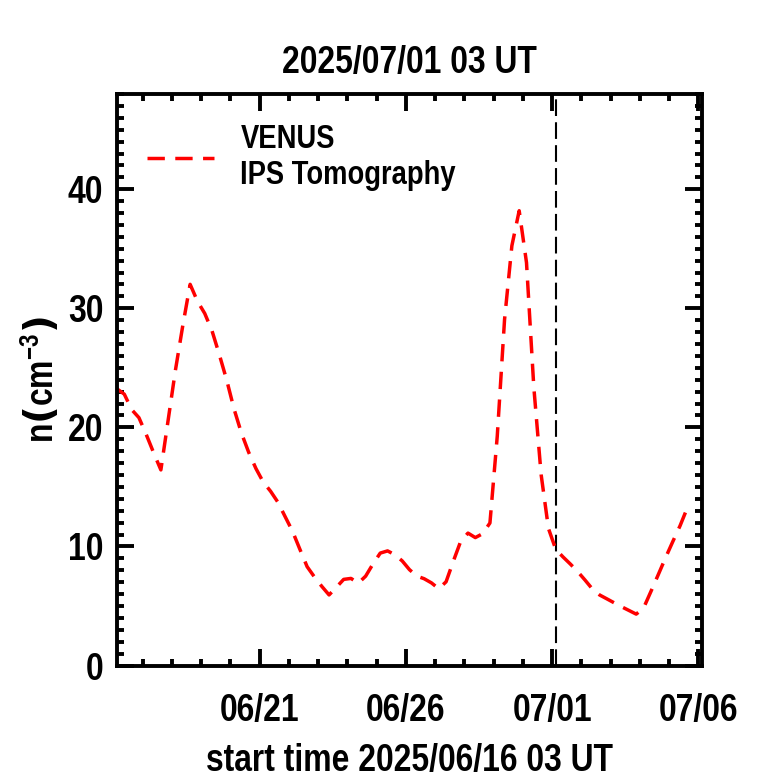
PSP 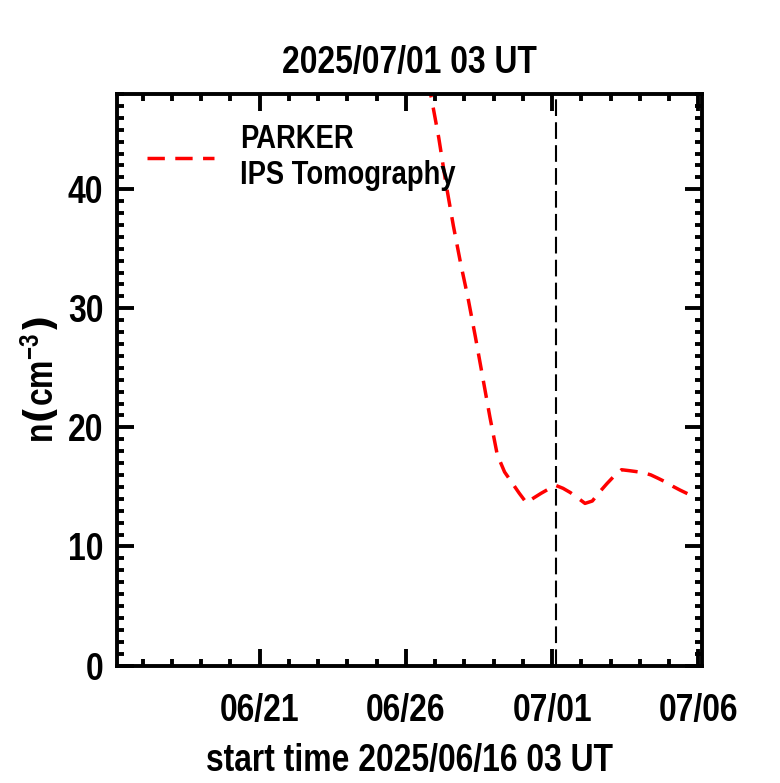
Mars 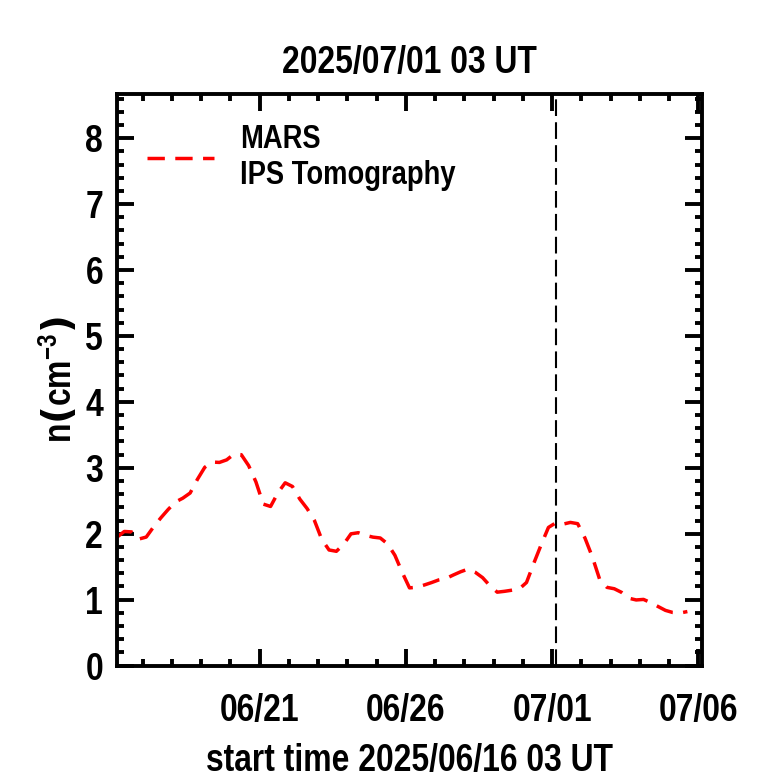
Orbiter 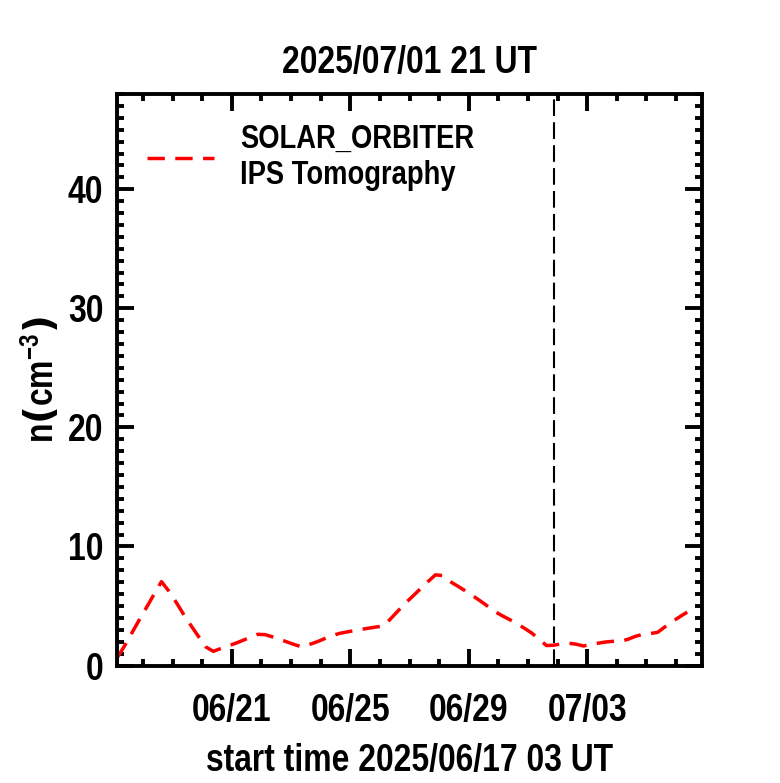
Earth Stereo 1 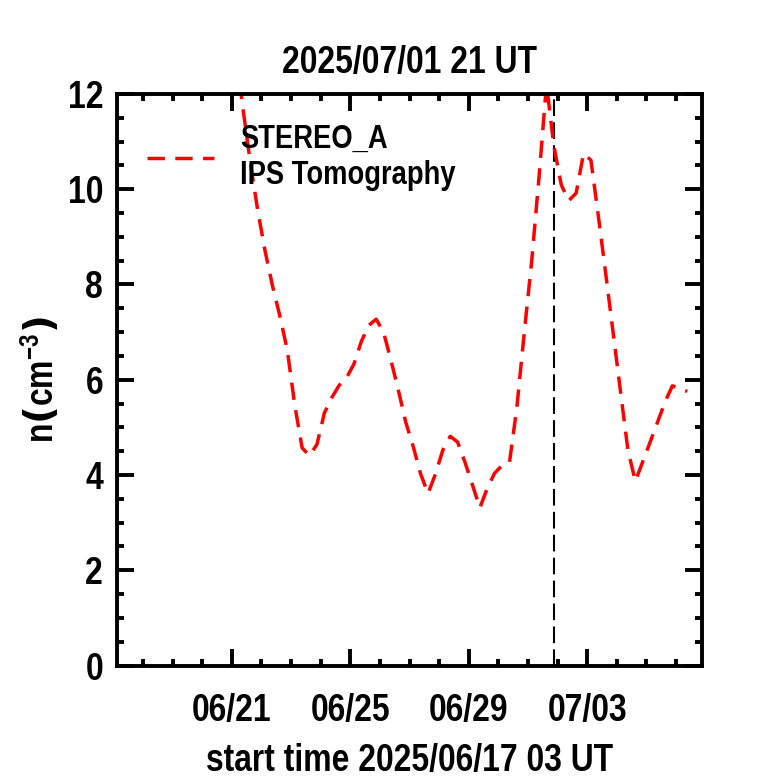
|
This is a Kinematic Model run of the ISEE, Japan Interplanetary Scintillation (IPS) analysis providing density and velocity of the solar wind and the detail of the orbits of the inner planets. Also included are the spacecraft locations of the Parker Solar Probe, BepiColombo, and Solar Orbiter. More imagery of these same real-time data that are Earth-based and at somewhat different resolution can be found from this same left page or at: http://ips.ucsd.edu/IPS-ENLIL_predictions or http://ips.ucsd.edu/ENLIL_predictions.
|
Density Mercury 
BepiColombo 
Venus 
PSP 
Mars 
Orbiter 
Earth Stereo 1 
|
|
Radial Velocity Mercury 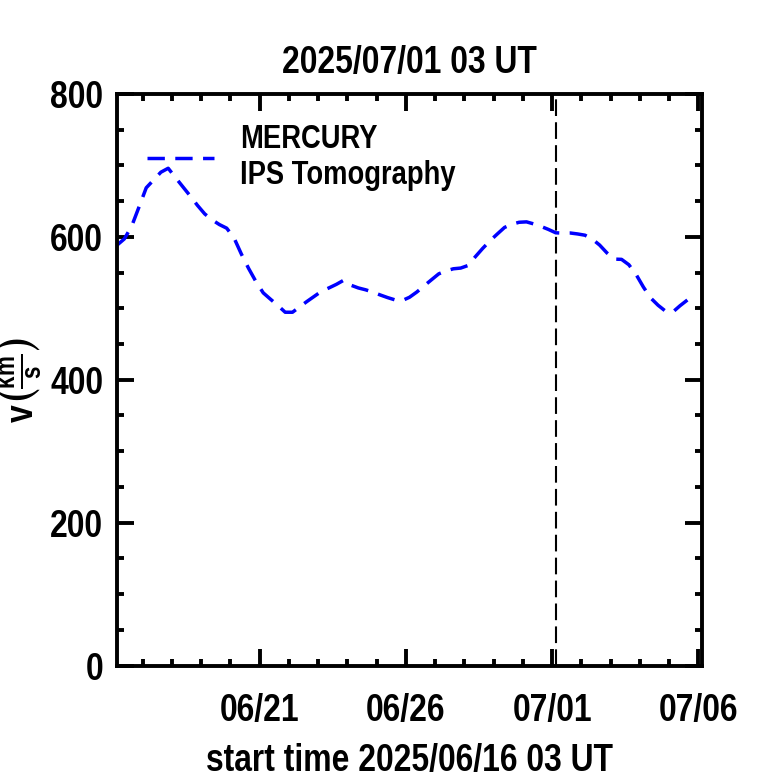
BepiColombo 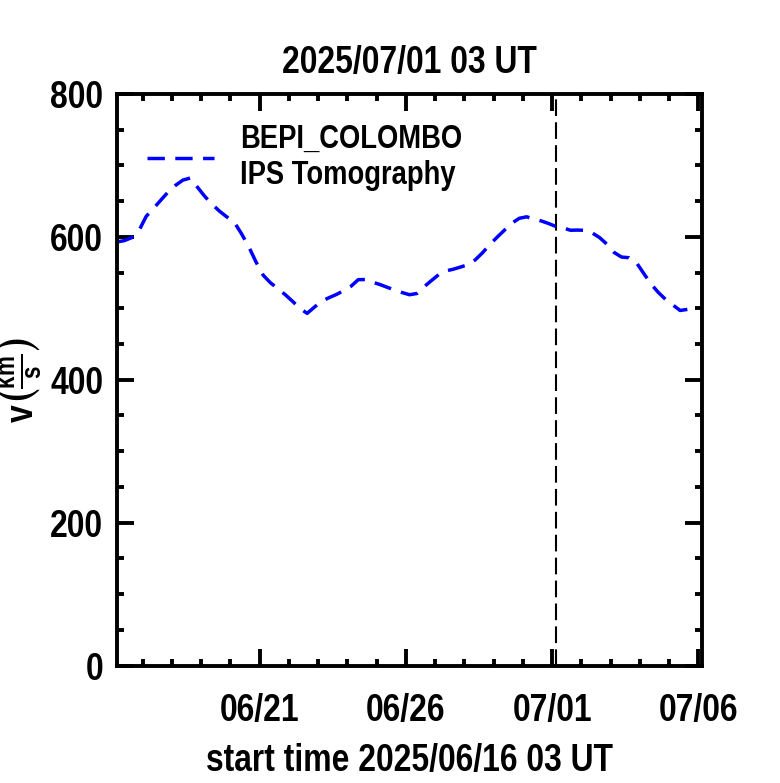
Venus 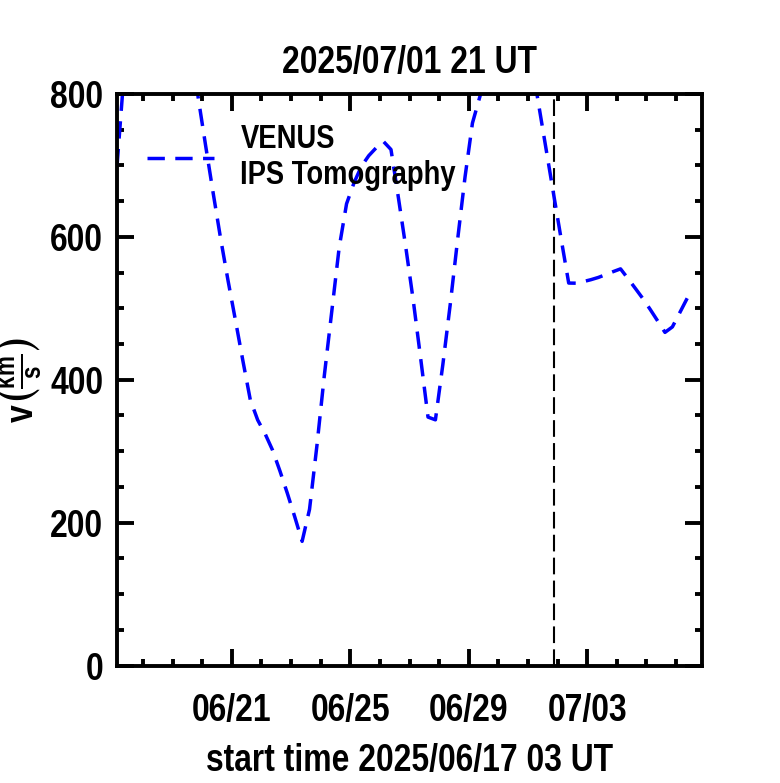
PSP 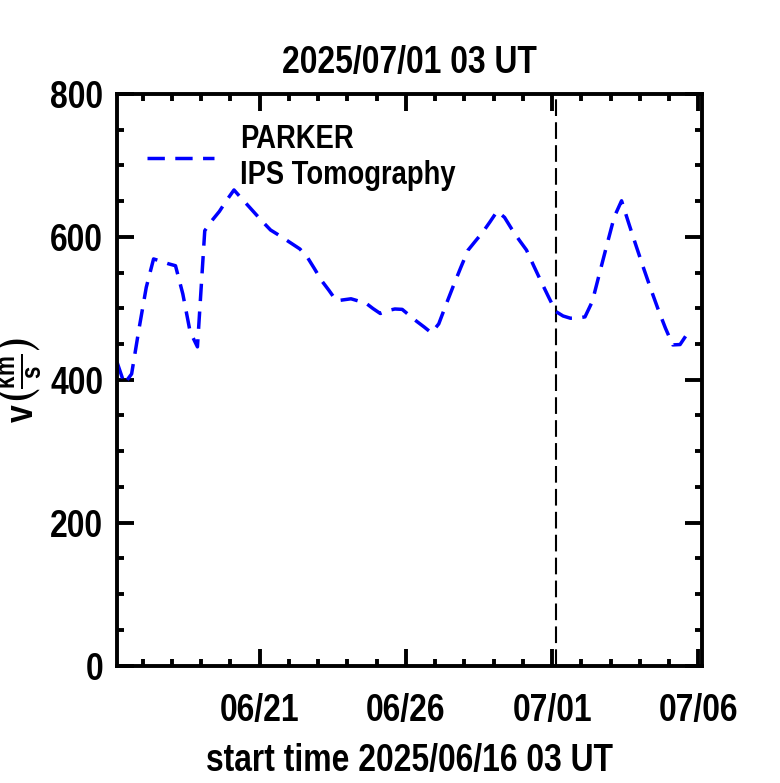
Mars 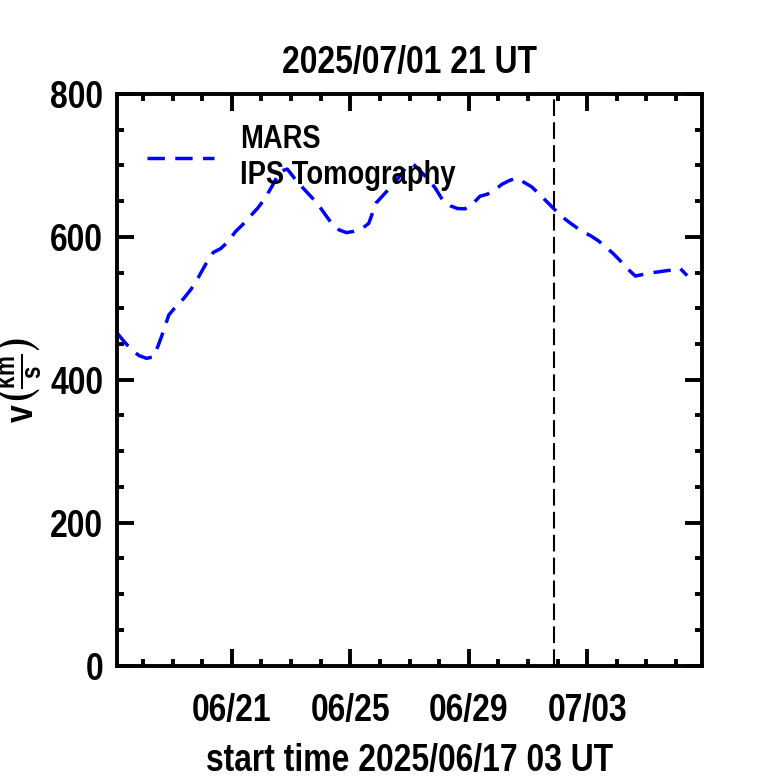
Orbiter 
Earth Stereo 1 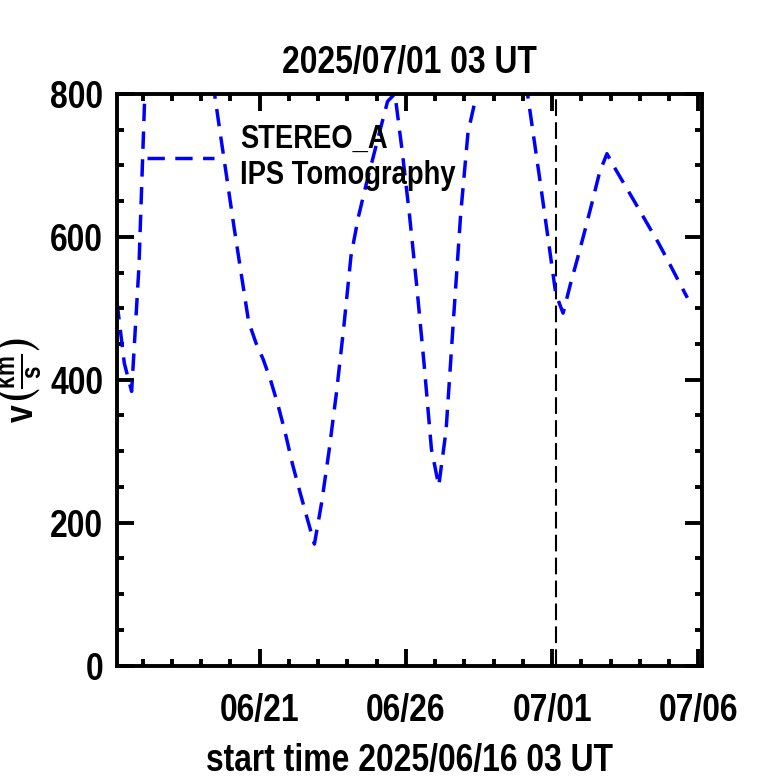
|
Planar cuts along the ecliptic: These show the density (normalized to 1 AU) and velocity, as planar cuts along the ecliptic within 6 hours of the current time. The Sun is in the center with Earth to the right; The planets Mercury, Venus, Earth, and Mars are shown on their orbits around the Sun projected into the ecliptic plane. The Parker Solar Probe, BepiColombo, and Solar Orbiter are shown as the indicated symbols. The maps are derived from a tomographic time-dependent model of the solar wind that is fit to interplanetary scintillation (IPS) velocities and g-levels obtained daily from ISEE, Japan. The model is updated every six hours.
Planar cuts at the Earth's meridian: These show the density (normalized to 1 AU) and velocity as planar cuts along at the Earth's meridian at the same time as the ecliptic cuts. The Sun is in the center; Earth is shown on its orbit (a straight line) to the right of the image. The planets Mercury, Venus, and Mars are shown as small circles. The Parker Solar Probe, BepiColombo, and Solar Orbiter are shown as the indicated symbols.
Time series plots: Planetary and spacecraft solar wind parameters density and radial velocity are derived from the time-dependent tomography model (dashed curves) and presented here in real time. A vertical dashed line indicates the GMT run time of the tomography program that is provided above the time series. The time series is updated every six hours at the same time as the volumetric cuts. The prediction of future parameter values begins at the location of the vertical dashed line. Near-Earth solar wind parameters (dashed curves) are shown in comparison with Advanced Composition Explorer (ACE) spacecraft measured velocity and density (solid curves). For Earth the Pearson's "R" correlation between the model and observed values of each parameter is shown up to the time there are no more in-situ spacecraft data available.